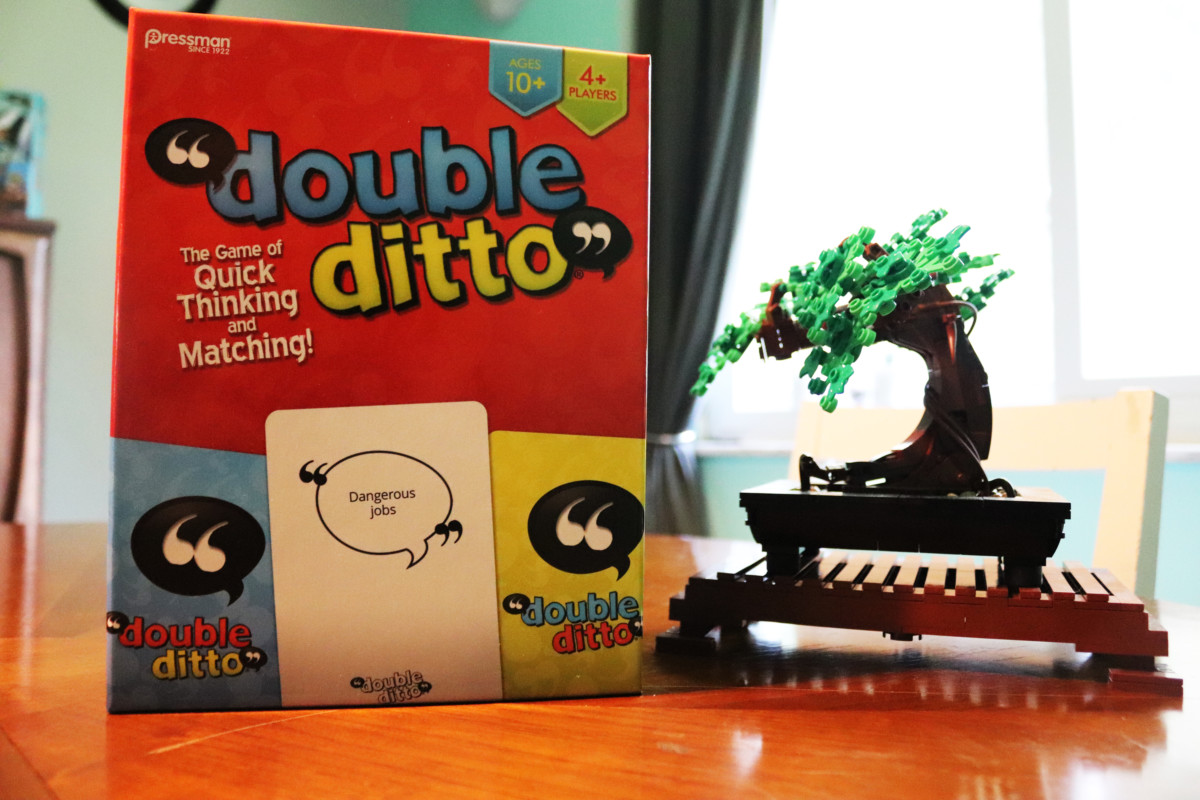
The Best Review for Double Ditto Game
What is Double Ditto?
Today’s Double Ditto review is brought to you by Goliath Games. They describe their game as, “An AWARD WINNING and AMAZON BEST-SELLER” and “the perfect party game where everyone can play!” Let’s see if this description holds true, shall we?
[amazon box =”B00UA7O1GW”]
Who Will Enjoy Double Ditto?
Anyone who enjoys party games or isn’t worried about winning or losing and just wants to have a fun time sitting around with family and friends exchanging laughs. If you like games like Scattergories this may be right up your alley.

Who Will Not Enjoy Double Ditto?
Anyone looking for anything more than just a simple party game that doesn’t really take any skill or strategy.
How To Play Double Ditto Game:
Each player writes down two answers, to a card’s suggested topic, in hopes of matching them with others around the table. The player with the most matched answers, throughout the entire game, wins.

A Turn
Each turn starts with one player, known as the ‘Ditto Master’, taking the top card from the pile and reading it to the rest of the players. Each player, including the Ditto Master, has 15 seconds to write down two answers. The Ditto Master then reads their answers, if anyone matches they’re supposed to yell, “Ditto” and if they match both answers, they yell, “Double Ditto!”
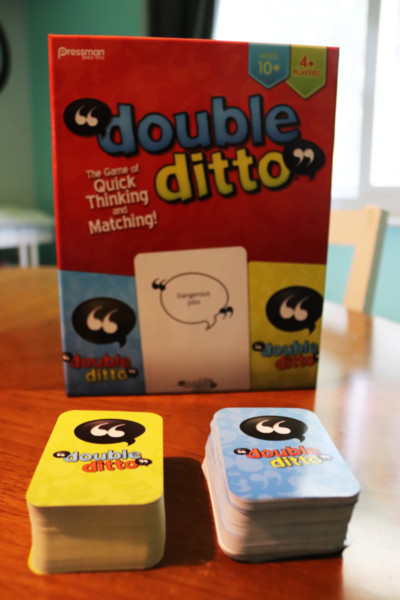 Lots of Cards to Choose From
Lots of Cards to Choose From
Once the Ditto Master has read their answers the player to their left then reads theirs and if anyone matches those, the yelling of “Ditto!” and “Double Ditto!” commences. This goes around the table until all players have read their answers and matched any possibilities.
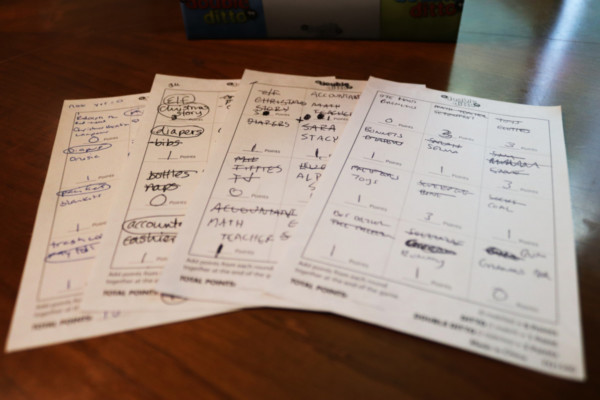 “Ditto!” and “Double Ditto!” All Around the Table
“Ditto!” and “Double Ditto!” All Around the Table
The next turn starts as the player to the left of the Ditto Master becomes said master and the turn repeats. Once everyone’s had a chance to be the Ditto Master the round ends. Depending on how many players there are determines how many rounds there will be (4 Rounds for 4-5 players, 3 rounds for 6-7 players, and 2 rounds for 8-10 players).
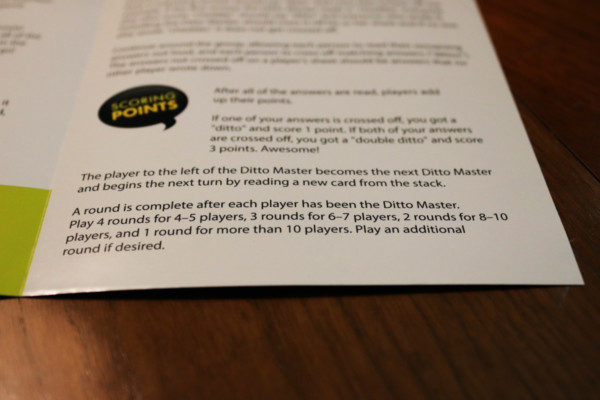 4 Rounds for 4-5 Players, 3 Rounds for 6-7 Players, and 2 Rounds for 8-10 Players
4 Rounds for 4-5 Players, 3 Rounds for 6-7 Players, and 2 Rounds for 8-10 Players
After all the rounds are complete the players total up their score and the one with the most points, wins
Scoring
The scoring in Double Ditto is simple, if not a little too simplified (I go into this more later), even for a party game. If you get one, “Ditto!” that counts as 1 point. If you happen to match both of your answers and get the “Double Ditto!” that counts as 3 points.
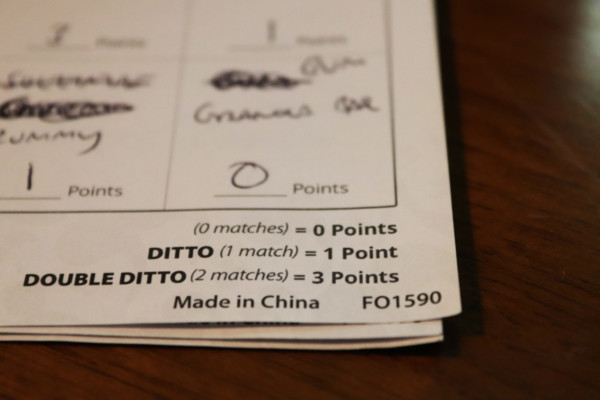 Scoring System
Scoring System
Components
The components are very modest in that it includes a two-page instruction booklet, 400 topic cards, a timer, and a printed pad of paper for the answers. Although all seem to be in fine quality they don’t exactly reach their full potential unfortunately and I’ll go into this further in just a bit.
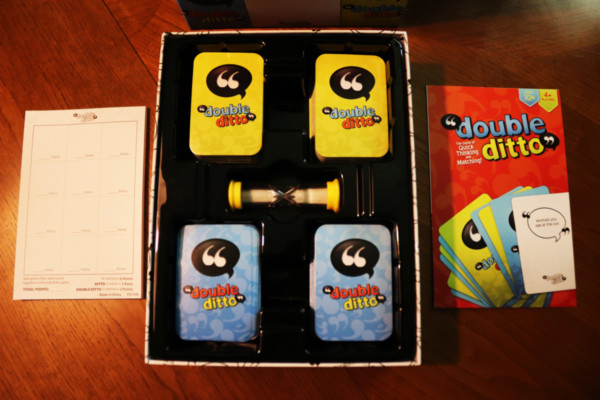 Everything Included In the Box
Everything Included In the Box
The Pros of Double Ditto
Easy to Learn
Like any good party game, Double Ditto is very easy to learn and play. There’s nothing complicated about the gameplay itself.
Great Laughs and Conversations
If there is one thing Double Ditto does absolutely right, it’s creating an atmosphere where a lot of laughs and fun conversations are easily fostered.
You can’t help but laugh at why you, or others, wrote what was written because a lot of it depends on a stream of consciousness since you don’t have time to think about what you’re writing.
Great Vacation Game
This is definitely one of those great games to consider taking on a vacation as it’s easy to break out and play with anyone, anywhere, while also having a very small footprint that won’t take up too much room in your luggage.
Both being a party game and not having a ton of components also helps with the ease of being a part of any trip.
The Cons of Double Ditto
Technicalities
Within the rules, it states that when you match an answer with someone else you are to cross it out. This is a very weird decision because during the 15 seconds when I would write an answer I sometimes thought of a better one and crossed out the original. Well, needless to say, when you’ve crossed out answers alongside crossed out CORRECT answers, I think you can see how things could get confusing quickly.
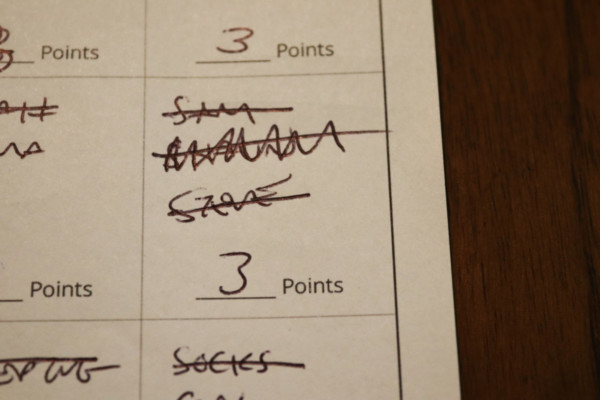 Crossing Out Correct Answers vs Crossing Out Answers You Changed Your Mind On
Crossing Out Correct Answers vs Crossing Out Answers You Changed Your Mind On
They should have recommended checkmarks, circling, or some other form of distinguishing the matched answers on the scoring pad. Obviously, you can change it yourself, and do what you please, but it was just an odd choice to recommend a universal symbol that literally stands for the opposite of what you’re intending to do.
Scoring Pad
Keeping on the subject of the scoring pad, unfortunately, it has all kinds of issues. For one, the pad is just an array of 12 answer/scoring boxes that each represent a turn. If you do the math from the number of rounds mentioned above (4 Rounds for 4-5 players, 3 rounds for 6-7 players, and 2 rounds for 8-10 players), 12 boxes is another odd choice.
Think about it, if you play with 4 players (the minimum required) you are supposed to play 4 rounds. 4 multiplied by 4 equals 16. So, with the bare minimum of players, you will obviously run out of boxes and have to use the back of the sheet. That means no matter how many players you have, you will always have to use the back of the sheet. Something tells me they could have designed the pad better to accommodate for this.
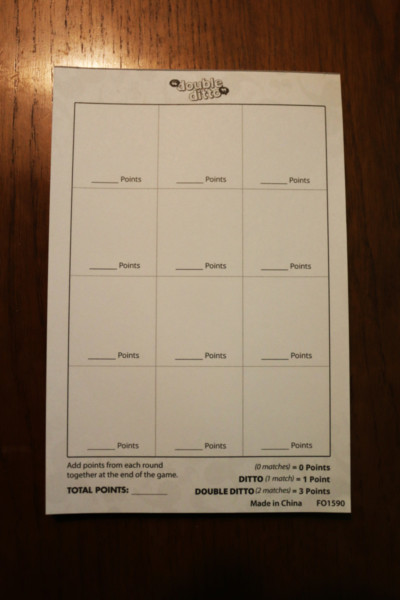 The Scoring Pad
The Scoring Pad
Another issue with the pad is that it’s just an empty box for each turn. If they would have had two or three lines in each box with an empty tick box next to them, this would have eliminated the ‘cross-out the correct answer’ issue and instead implemented ticks next to the correct ones.
The other advantage to a better scoring pad is that if they were able to consolidate it all to one side of the sheet then they could have printed it on both sides, essentially doubling the number of scoring sheets in total.
Scoring System
The issue with scoring isn’t so much that one matched answer equals 1 point and both answers being matched equals 3 points, but that there is literally no advantage to matching answers with the Ditto Master.
For example, if I match both answers with the Ditto Master I get 3 points, but if I match one answer with one player (Ditto Master or not) and I match the other answer with someone else, I still match both answers written and get those same 3 points.
It feels like there should be an advantage to matching the Ditto Master’s answers but there aren’t any. Also, you would think that matching both answers with one person, let alone the Ditto Master, would be more impressive, thus scoring more points, than if you matched each answer with two different people. But no, they’re all equal in Double Ditto.
(Dis)advantages
It seems relationship partners may have an advantage in this game as they typically share similar thoughts, experiences, and obvious connections. By letting all matches be equal gives advantages to those couples.
If only an immediate family played this game I think you’d have a lot of similar answers so I would recommend playing this with a more diverse group of people. I’ve never said this before but this could be one party game that might be best played with strangers as it would open up the possibility of more assorted answers, thus making it anyone’s game.
Questionable Terminology
A confusing portion of the game is that the cards are referred to as ‘Question Cards’ however, they don’t ask any questions. They’re just a topic. So when first opening the game and being instructed about Question Cards you’ll go to pick up, say, a blue card, see no question on it, then flip up a green card, and also see no question. That’s typically when the only question you’ll have about the cards is, “Why are there two different colors of cards?”
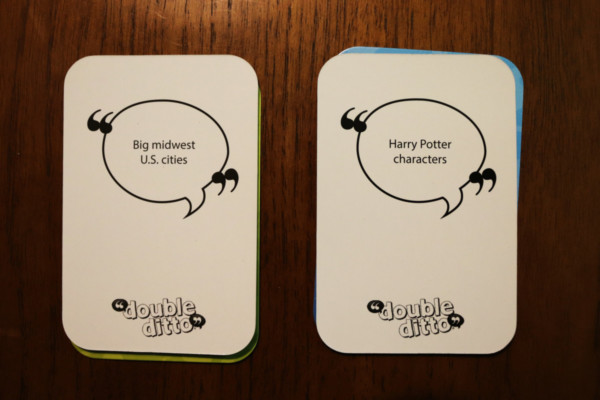 These Don’t Appear to Be “Questions”
These Don’t Appear to Be “Questions”
Card Colors
Speaking of colors on cards. The game comes with two stacks of cards. One blue and one greenish-yellow. There is nothing in the instructions about what the difference in colors is and if there is a gaming element to them.
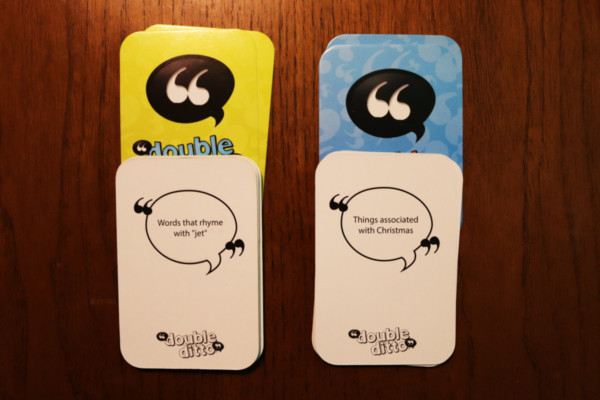 One of These Does Not Seem Harder Than the Other
One of These Does Not Seem Harder Than the Other
I looked it up and only found on Amazon where someone had asked what the differences were and the only answer given by another player was, “One set of cards is more difficult to match than the other.” The problem with that is when you read the cards there doesn’t seem to be a color that tends to be more difficult than the other so I don’t think that’s correct. If it is, then which is supposed to be the more difficult deck and why isn’t this addressed in the directions? Not clarifying this seems to be the only question I found on these cards.
Timer
This con is literally that, a con. They’re conning you if you think you’re getting an actually usable timer because although there is a sand timer included in the game it’s pretty much worthless due to the fact that the directions say everyone only has 15 seconds to write down their answers and this is a 58-second timer.
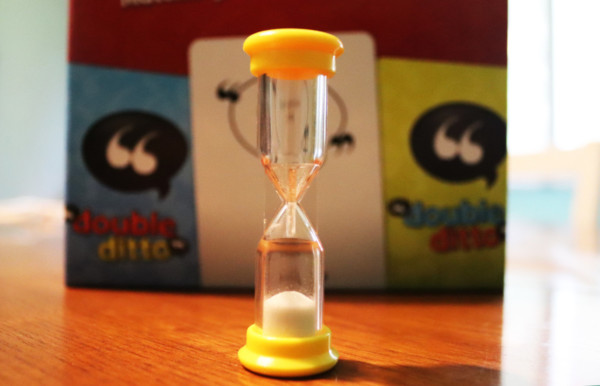 The 58 Second Timer
The 58 Second Timer
Yes, that’s correct, 58 seconds. We tested it multiple times and it never actually reached a full minute but regardless, in a game where you’re supposed to be timing it for 15 seconds, this is a miss.
We designated someone with a stopwatch to help keep time during the game. I think some kind of egg timer that has an audible clicking countdown would be better utilized as everyone is looking down writing so even the sand time makes no sense since no one is *watching* it (yes, pun intended).
Final Thoughts on Double Ditto
With regard to my final thoughts, Double Ditto is a very fun party game to play with family and friends where you’re guaranteed great laughs and entertaining conversations. Although all of the included components have issues, that doesn’t stop Double Ditto from being a game that will bring joy to everyone playing.


